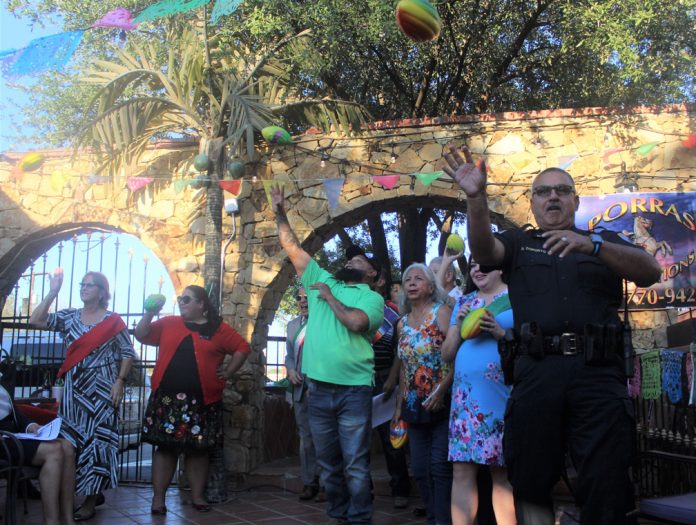Hispanic Heritage of Odessa officially kicked off this year’s Hispanic Heritage Month with a celebration Thursday at Ajuaas restaurant.
In the past, Hispanic Heritage of Odessa held its kickoff celebration ceremony with a breakfast but this year decided to hold an evening event.
“We decided to do the evening because the mariachi and food and people can stay and mingle and it’s a little more relaxing in the afternoon,” Hispanic Heritage of Odessa President Liliana Marquez said.
Numerous awards were given out throughout the evening including the Sewell Amistad Award which was presented to Mari Willis, Detra White and Tom Sprawls.
The Adinvita Visionary Award was presented to Nick Hernandez.
“We decided to honor some people that are retiring like Mari Willis and we decided to honor them since they are retiring from the city of Odessa and show how much support we have for them,” Marquez said.
Each year, Hispanic Heritage of Odessa has a billboard with a different theme during Hispanic Heritage Month.
This year’s theme was celebrating American heritage, specifically cowboy heritage.
“For 15 consecutive years, Hispanic Heritage of Odessa has presented a billboard with Hispanic leaders and outstanding citizens as tribute to the different elements of our heritage,” Hispanic Heritage of Odessa Director Janette Fierro said during the presentation. “This year, our chosen theme is ‘celebrating our American Heritage’. Our wonderful billboard sponsors are dressed in western attire.”
Fierro continued to discuss the history of the American cowboy and its origins in Spain.
“The history of the American cowboy originates in Spain with the colonization of the Americas,” Fierro said. “It was extensively developed in Mexico. … The Spaniards began building their traditional haciendas and many early vaqueros were Native Americans trained to work for the Spanish missions in caring for the mission first. Vaqueros were known for their superior roping, riding and herding skills. It was the Spaniards who reintroduced the horse to the Americas. The traditions of Spain were transformed by the geographic environment and cultural circumstances of New Spain which later became Mexico and southwestern United States. All the pieces of the traditional cowboy western wear that you see today, grew out of practical need of the environment the cowboy worked. The cowboys today still worked as their ancestors did in the old west. It’s now seen in movies from John Wayne to shows like Yellow Stone. A vaquero is an influential part of Hispanic heritage and American heritage. It is vital that we each learn where we came form if we want to truly understand ourselves and our history.”
Julian Rubio is this year’s Padrino.
“We are excited that Julian Rubio is our Padrino this year,” Marquez said. “That’s really exciting. We’ve been working with him for a couple of years and now that he decided to accept to be Padrino, it’s an honor for us.”




